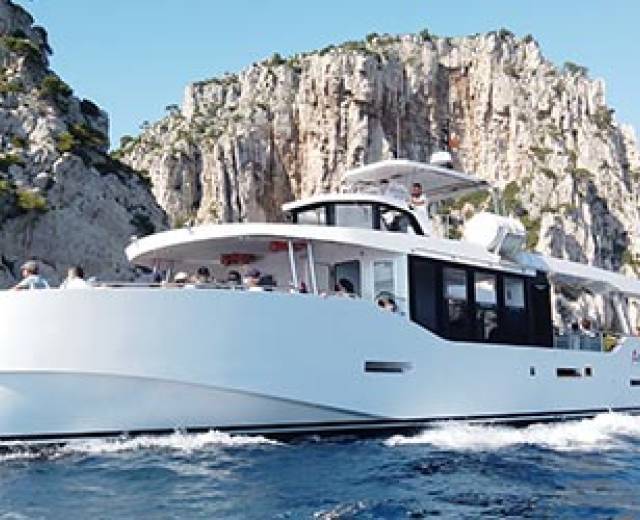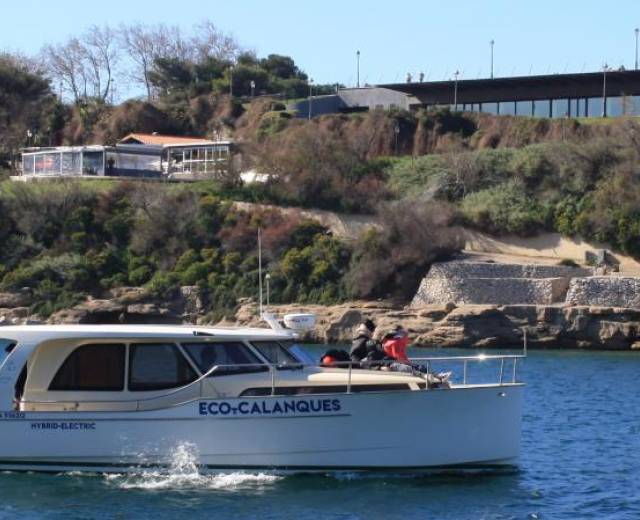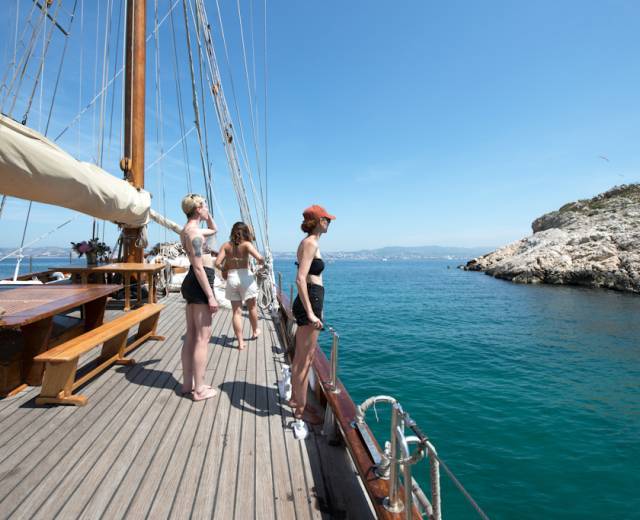
Rue du pont de Borel
97129 lamentin
Guadeloupe

Rue du pont de Borel
97129 lamentin
Guadeloupe

La Ferme des Châtaigniers
Le Cabanis
30120 Bez et Esparon
France

Lieu dit La Chasse
73440 St-Martin-de-Belleville
France
With 93 % of its surface area covered by the sea, the Calanques National Park is best explored by diving or from the deck of a boat! Go on a voyage of discovery to see these hidden undersea treasures. From historical remains to living specimens of our rich and unique biodiversity, admire the little-known and hushed beauty of its depths.
LWhether taking a break at the end of a calanque or during a hike, a mask and snorkel are all you need to observe teeming undersea life: little rock fish, all kinds of fry, shoals of dreamfish, octopuses and even, a bit deeper, the famous Grouper. In the midst of this silent world, you can also observe meadows of Posidonia seagrass, the endemic marine plant that acts as the lungs of the Mediterranean and provides refuge for a multitude of species.
The secrets and legends of the Calanques will fascinate the most curious among you, together with history lovers. Under the water, you can explore many caves and wrecks, like that of the Grand-Saint-Antoine!
Climb on board at Cassis, La Ciotat or Marseille … borne by the sea wind, the luckiest of you will encounter some of the fantastic and infrequently sighted creatures that populate the deep waters of the Mediterranean, including the Fin Whale, numerous species of dolphins, tunas and Sunfish.
Discovered in 1985 by the professional diver after whom it is named, Cosquer is one of only two identified decorated palaeolithic caves in south-eastern France, and the only known example whose entrance is under the sea! At the time when prehistoric people frequented the site, the sea level was at least 120 metres lower. On its walls, you can see hand stencils, geometric signs and almost 500 representations of animals, including very rare pictures of marine animals such as auks!
This ship is sadly famous for bringing the Great Plague to Marseille, decimating nearly half of the city and a quarter that of the Provencal population between 1720 and 1723. On 25th May 1720, the three-masted merchant vessel unloaded its rolls of fabrics, infested with fleas, which transmitted the epidemic … By the time people realised, it was already too late. The destruction of the ship was ordered, and it was burned close to the Ile du Jarre. Its wreck still lies there today, at depths of between 10 and 18 metres.
The ground from the Sainte-Baume ridge to the Calanques consists of limestone rock, fissured by a vast network of cracks and holes, referred to as karst. This underground labyrinth extends over hundreds of kilometres. Rainwater seeps into it and re-emerges elsewhere, as in the Port-Miou Calanque, where the whirlpools it causes have been known since ancient times. The recent experience of two potholers suggests that one of the longest underwater rivers in Europe is hidden here under the rocks …

Sormiou
13000 Marseille
France

Sormiou
13000 Marseille
France

Vieux-Port
13000 Marseille
France

Quai d'honneur du Vieux Port
13002 Marseille
France

Quai d'honneur du Vieux Port
13002 Marseille
France

Terminus ligne 22
Quartier des Baumettes
13008 Marseille 8e Arrondissement
France
Quai des belges
13001 Marseille
France

Quai d'honneur du Vieux Port (porte 2)
13002 Marseille
France

Quai d'honneur du Vieux Port (porte 2)
13002 Marseille
France